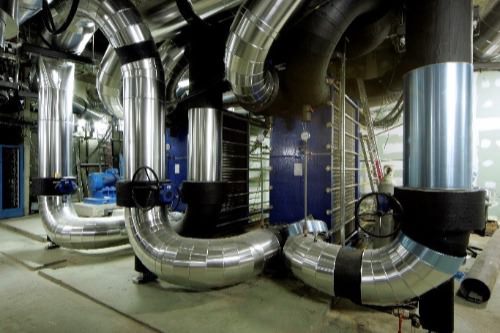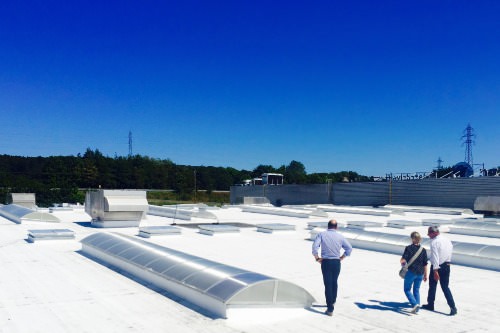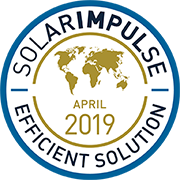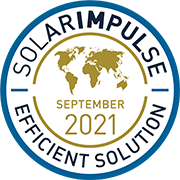Insights - February 1, 2023
The Green Transition of Cooling


Written by Emma Wink 5 min read
We need to change the way we do cooling but how? Can alternative business models help? This article explores why clean and efficient cooling matters, and how servitisation can drive positive change.
We need to change the way we do cooling. Cooling accounts for 10% of global energy consumption and is expected to double by 2040. This rapid growth is on course to significantly increase energy demand and emissions. At the same time, access to cooling is essential to climate adaptation and human well-being, affecting our ability to withstand intensifying heatwaves, preserve food, and store medicines. Of the almost 3 billion people living in the hottest climates, a mere 8% own an air-conditioner compared to 90% in Japan and the US.
The bottom line is that clean and efficient cooling solutions exist but aren’t being widely adopted. Today, the average efficiency of air conditioners is less than half of what is commercially available.
Why does cooling matter? What’s the problem with cooling today?
3.6 billion cooling appliances are being used around the world. Beyond providing thermal comfort and refrigeration in our homes, cooling is vital to modern life: from cold chains, health facilities, data centres and power plants. Demand for air-conditioning units (ACs) is set to grow massively in emerging economies (see Figure 1), and currently represents the fastest growing use of energy in buildings.
 Source: IEA, 2018
Source: IEA, 2018Mainstream cooling solutions used today differ drastically by application and region. Across the board however, ageing systems are often inefficient in terms of energy use and utilise refrigerants that are being phased down or out. Refrigerants are chemical substances that cycle from liquid to gas and facilitate the process of heat exchange. ACs for example work using a refrigerant to absorb heat from the air inside a room which is then transferred outside. Cooler air is then distributed using a fan.
A key environmental problem with many refrigerants relates to leakage, often occurring at a product’s end of life. Refrigerants are classified by their global warming potential (GWP), a measure of how much heat they trap relative to CO2, usually over 100 years. The larger the GWP, the more impact it has on global warming. More potent greenhouse gases are banned or are being phased out under the 2016 Kigali Amendment to the Montreal Protocol.
Some sectors, like commercial and industrial refrigeration, are rapidly transitioning to natural refrigerants to keep up with changing policies restricting fluorinated gases (f-gases). Prioritising cooling solutions utilising low GWP or natural refrigerants1 such as ammonia or CO2 are key to reducing the negative environmental impacts of cooling.
 South Africa’s largest dairy company benefiting from CaaS delivered by EPR’s ammonia-based solution. Learn more here
South Africa’s largest dairy company benefiting from CaaS delivered by EPR’s ammonia-based solution. Learn more hereReducing cooling-related emissions also depends on clean energy supply. Though the share of renewable energy production is increasing in many countries, reducing the energy-intensity of cooling through increased efficiency can reduce demand and need for additional infrastructure. Doubling the energy efficiency of air conditioners alone could reap savings from reduced electricity generation and transmission costs of USD 2.9 trillion by 20502.
Worldwide, significant cooling gaps remain and cold chains in many countries are either absent or broken. Given the growing importance of these technologies as we face the effects of climate change and more frequent heat events, meeting the global need for cooling in a sustainable way is imperative. Otherwise, we remain locked in a vicious circle: energy-intensive cooling drives emissions and global warming, and our need for more cooling.
What are alternative systems that exist today?
Alternative systems which are more energy efficient include aggregated cooling or district cooling rather than individual systems (such as labelled solution District Cooling Systems); systems which can use the cooler temperatures of seawater or lake water (such as Sea Water Air Conditioning SWAC); or geothermal energy (such as Celsius Energy). Greater use of these solutions can help to reduce peak energy demand and the need for additional power generation and distribution infrastructure. According to Ilana Koegelenberg of World Refrigeration Day, former Head of Market Intelligence at ATMOsphere, so-called “free” heat is also becoming popular, harnessing the waste heat from refrigeration for heating purposes in an integrated system.
Other ways of providing cooling include passive solutions in building and material design (such as solution CoolRoof) , and nature-based solutions such as trees or foliage for shade (such as solution by Urban Canopee), which can reduce the need for end-use cooling technologies and reduce the heat island effect, a problem faced in many urban areas.
Why are businesses not changing their cooling systems?
Meeting the growing demand for cooling is an enormous business opportunity. The market adoption of efficient solutions remains slow, and is in part attributed to strong demand-side market barriers such as: higher up-front investment required for clean and efficient solutions, greater perceived performance and maintenance risks, and competing investment priorities of buyers. There is also the issue of split incentives for carrying out energy efficiency measures such as between building owners and tenants, where end-users pay for energy costs.
In many countries, MEPS (minimum energy performance standards) regulate the use of the most inefficient cooling appliances. However, such measures vary in scope and implementation, and alone cannot address the consequences of increasing demand for cooling. Innovative business models like servitization that encourage efficiency and the move towards circularity are increasingly financially attractive for investors. Combined with policy support and advocacy, these can strongly accelerate momentum and scalability.
What is CaaS and how does it work?
Sustainable cooling means affordability and access must be considered whilst the environmental impact of cooling is minimised. The servitisation business model in particular can promote energy and resource-efficient technologies through overcoming barriers, aligning incentives and unlocking investment in cleaner technologies. Applied to cooling, the model is known as Cooling as a service (CaaS), and replaces the purchase of assets with a pay-per-outcome approach. Under this model, customers pay for cooling consumed, whilst the equipment remains under the ownership of the technology provider who is responsible for installation, operation, repair, maintenance and performance. The model removes upfront costs of clean and efficient systems for customers, while incentivising providers to design solutions for optimal performance, efficiency, increased life-cycle value (with higher Return on Investment) and to design for circularity. The model is currently being implemented at a variety of scales around the world.
 Source: CaaS White Paper, 2021
Source: CaaS White Paper, 2021
CaaS is also being used to tackle cold storage gaps for small-holder farmers. The project Your Virtual Cold Chain Assistant (Your VCCA), currently implemented in India and Nigeria, focuses on reducing post-harvest food losses by accelerating the deployment of solar powered cold rooms to store produce. The solution includes an app, Coldtivate, that allows farmers to monitor items in storage and helps with operating the cold rooms. Digitalisation is an integral part of as-a-service solutions, monitoring performance and system efficiency. Find out more in this short clip and here.
 Farmers in Nigeria accessing cold storage through CaaS with ColdHubs Solar Powered Cold Rooms. Learn more here
Farmers in Nigeria accessing cold storage through CaaS with ColdHubs Solar Powered Cold Rooms. Learn more hereWhat is the SET Alliance and its role?
Scaling up the use of CaaS requires collaboration and capacity-building across industries and markets. The CaaS Initiative launched by the BASE Foundation and with the financial support of the Clean Cooling Collaborative, focused on designing tools to support companies in adopting the model, as well as creating an alliance of over 85 members. To institutionalise and advance the work completed by CaaS, the SET Alliance was formed. The Alliance is a multi-stakeholder platform dedicated to mainstreaming the model for cooling and beyond (heating, lighting, mobility, energy storage).
The SET Alliance is working on decarbonising cities and urban areas, where servitisation is being recognised as a way forward in creating circular buildings. As rising living standards, rapid urbanisation, and more frequent heat events drive demand for cooling, creating more sustainable urban cooling is crucial. Innovative business models such as servitisation can accelerate energy efficiency and lower energy consumption; the work now lies in scaling solutions around the world.
1 Many countries are in the process of banning refrigerants in new systems with a GWP of over 150 (generally considered low). The market for utilising naturally occurring substances such as Ammonia (GWP of 0) or CO2 is rapidly developing and addressing system risks such as toxicity and high pressure.
2 The wider adoption of efficient cooling technologies to meet increasing demand reduces the energy intensity of cooling (the amount of energy used). Realising greater efficiency of cooling systems will slow the growth of global energy consumption and thus the need for more generation capacity.

Written by Emma Wink on February 1, 2023











